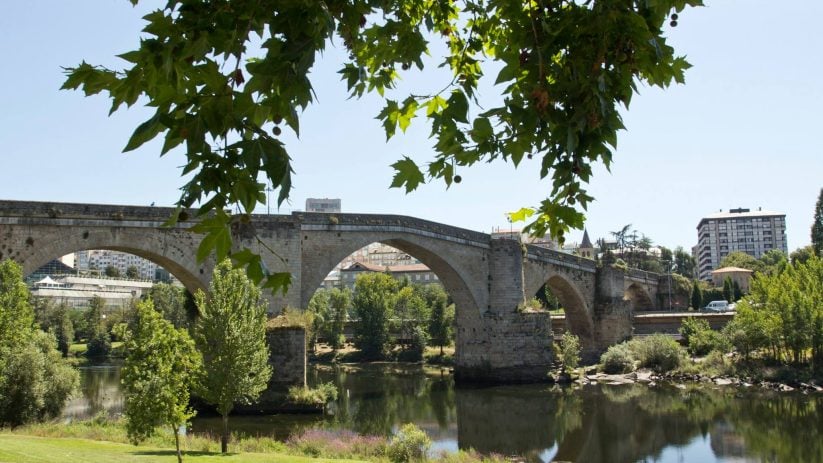The Via de la Plata is a captivating route through Spain leading to Santiago de Compostela. This journey showcases a rich blend of history, culture, and natural beauty. The final 100km of the Via de la Plata, from Ourense to Santiago, is one of the most beautiful routes to Santiago de Compostela. This lesser-known path takes pilgrims through lush Galician countryside, past Romanesque churches, and ends in the historic city of Santiago, starting from Ourense’s renowned thermal springs. Let’s explore the highlights along the Via de la Plata: Ourense, Cea, Dozón, Lalín, Silleda, Ponte Ulla, and Santiago de Compostela.
Ourense: The City of Hot Springs
Historical Highlights
Ourense, known for its thermal springs, offers a delightful mix of historical and modern attractions. The city’s Roman Bridge, a symbolic landmark, reflects its ancient heritage. Visitors walk through the historic centre to admire the medieval architecture and the stunning Cathedral of San Martiño, known for its Gothic and Baroque elements.
Relaxation and Wellness
The city’s famous thermal baths, such as the Outariz and A Chavasqueira Thermal Baths, provide a perfect way to unwind. These natural hot springs are renowned for their therapeutic properties, making Ourense a popular destination for relaxation and wellness.
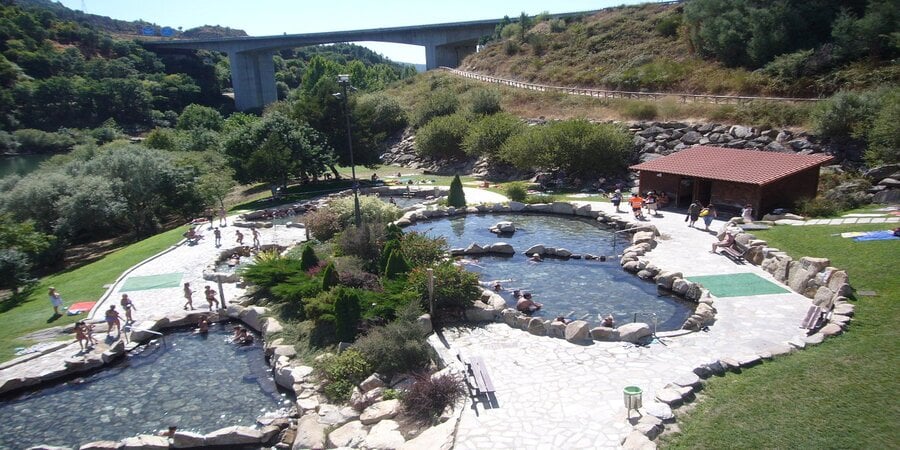
Cea: The Village of Bread
Gastronomic Delight
Cea is famed for its traditional bread, “Pan de Cea,” and is recognised for its quality and flavour. This small village is a haven for food lovers, with bakeries offering fresh, wood-fired bread that has been a staple for centuries.
Cultural Landmarks
The Monastery of Oseira, located near Cea, is a Cistercian monastery with a rich history and impressive architecture. Visitors can explore its peaceful surroundings and learn about the monastic life that has flourished here since the 12th century.
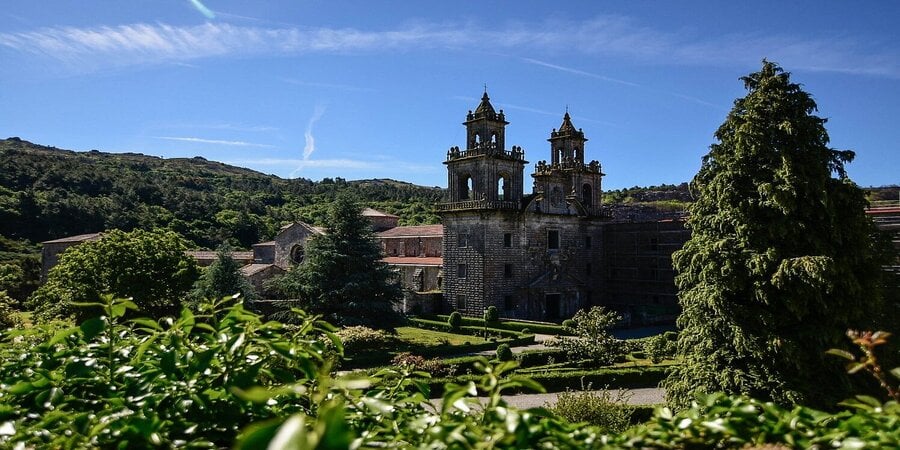
Dozón: A Peaceful Retreat
Tranquil Countryside
Dozón offers a serene escape with its lush landscapes and quiet charm. This small town is perfect for those seeking peace and nature. The surrounding countryside is dotted with charming rural houses and farms, providing a glimpse into traditional Galician life.
Architectural Heritage
The Church of San Pedro de Vilanova is a Romanesque building in Dozón. Its simple yet beautiful architecture is a testament to the region’s religious heritage, making it a peaceful spot for reflection.
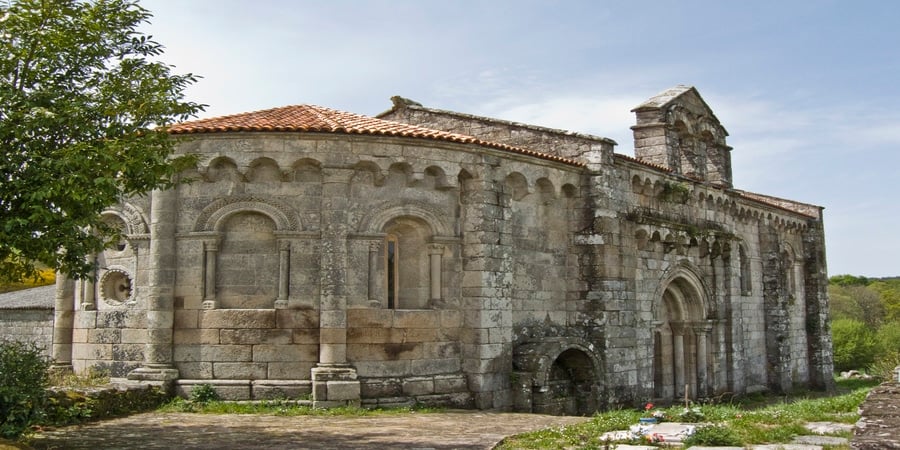
Lalín: The Heart of Galicia
Cultural Centre
Lalín is often considered the geographical centre of Galicia and is known for its vibrant cultural scene. The town hosts numerous festivals and events, celebrating everything from local cuisine to traditional music and dance.
Culinary Hub
Lalín is particularly famous for its cocido, a hearty Galician stew celebrated annually at the “Festa do Cocido.” This festival draws visitors from all over to taste this traditional dish made with pork, vegetables, and chickpeas.
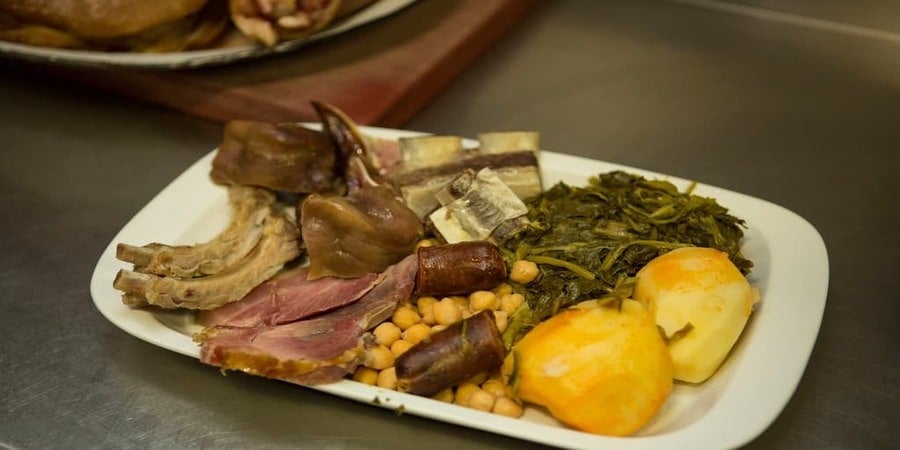
Silleda: Gateway to Nature
Natural Beauty
Silleda is surrounded by lush forests and rolling hills, making it an ideal destination for nature lovers. The area is home to the beautiful Fervenza do Toxa, one of Galicia’s highest waterfalls. The cascading waters and surrounding greenery create a picturesque setting for hiking and relaxation.
Historical Sites
The Monastery of Carboeiro is a hidden gem in the woods near Silleda. This Romanesque monastery offers a tranquil environment and a glimpse into the region’s religious history. Pilgrims can enjoy a peaceful escape and one of the most amazing highlights along the Via de la Plata.
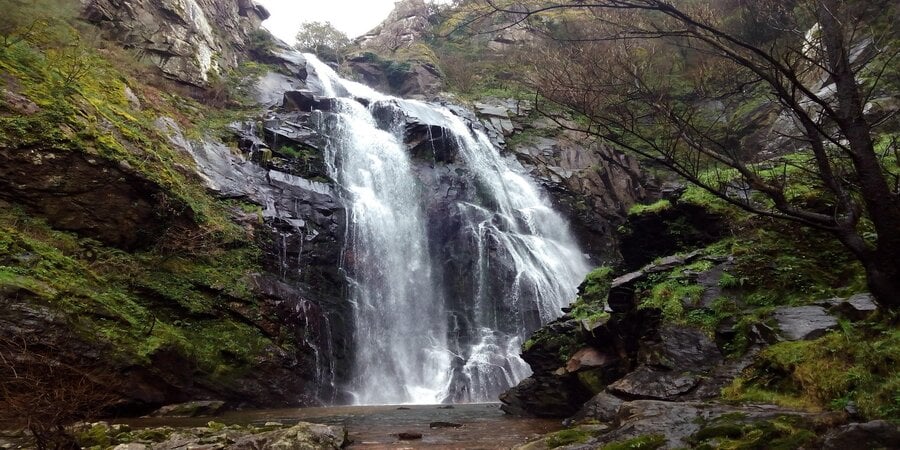
Ponte Ulla: Crossing the Ulla River
Scenic Landscapes
Ponte Ulla, situated on the banks of the Ulla River, is known for its beautiful landscapes and river views. The town’s iconic bridge, which gives it its name, provides a scenic crossing and is a great spot for taking in the area’s natural beauty.
Outdoor Activities
The Ulla River offers opportunities for various water activities, including fishing and kayaking. The surrounding areas also have numerous trails, perfect for hiking and enjoying the serene Galician countryside.
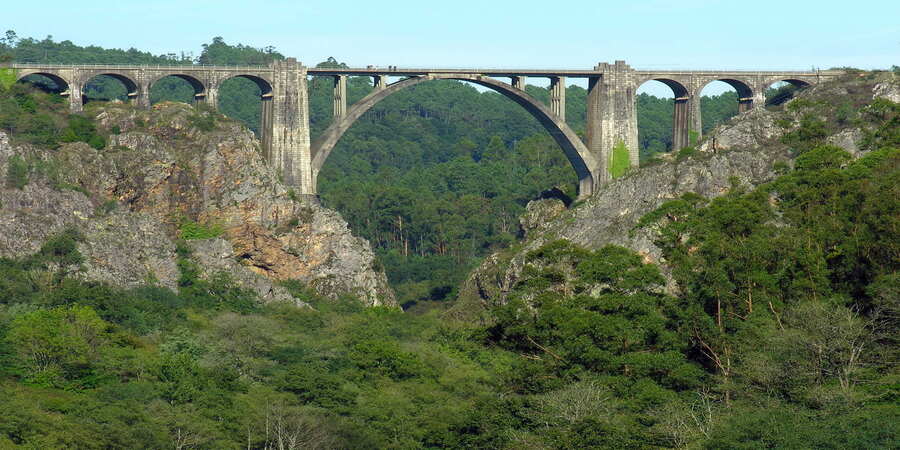
Santiago de Compostela: The Ultimate Destination
A Spiritual and Historical City
Santiago de Compostela, the final destination of the Via de la Plata, is a city rich in history and spiritual significance. The magnificent Cathedral of Santiago de Compostela, a UNESCO World Heritage site, is the culmination point for pilgrims. This stunning cathedral, with its blend of Romanesque, Gothic, and Baroque architecture, houses the relics of St. James the Apostle.
Cultural Richness
The city’s Old Town is a maze of narrow streets filled with historical buildings, museums, and vibrant squares. The Plaza del Obradoiro, the city’s main square, is a hub of activity where pilgrims and visitors gather to celebrate the end of their journey.
Culinary Delights
Santiago de Compostela is a gastronomic delight, offering traditional Galician dishes like pulpo a la gallega (octopus) and empanada. The city’s numerous restaurants and bars provide a welcoming atmosphere to relax and savour local cuisine.
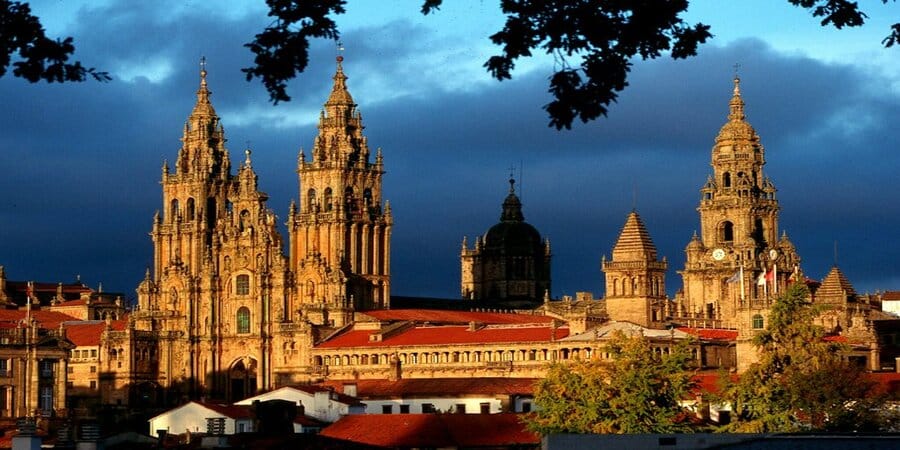
The Via de la Plata offers a rich and varied journey through Galicia, with highlights along the way that provide unique experiences. From the soothing thermal baths of Ourense to the delicious culinary offerings in Lalín and the spiritual ambience of Santiago de Compostela, this route is a beautiful blend of culture, history, and natural beauty. Whether you’re a pilgrim or a traveller, the Via de la Plata is an unforgettable adventure.
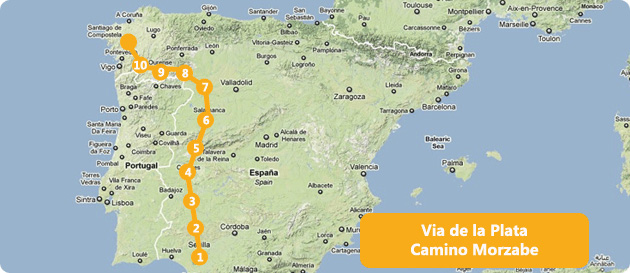
This guide offers a glimpse into the beauty and charm of the Via de la Plata. Whether you’re planning a pilgrimage or a cultural trip, each stop along the way has something unique to offer. For more information about the Via de la Plata or any other Camino de Santiago routes or to book your Camino trip, contact us. Buen Camino!
